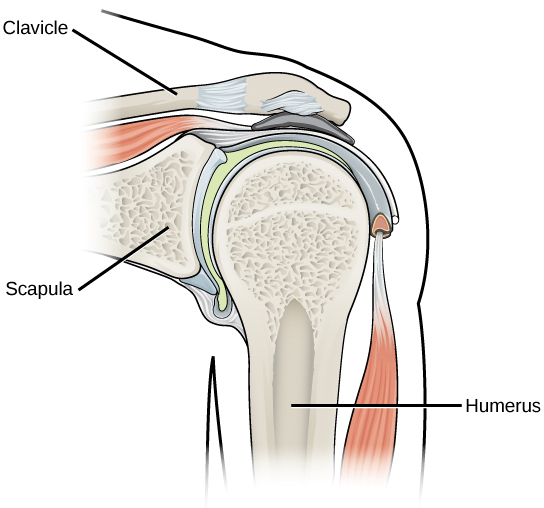| << Chapter < Page | Chapter >> Page > |

Watch this animation showing the six types of synovial joints.
Rheumatoid arthritis (RA) is an inflammatory disorder that primarily affects the synovial joints of the hands, feet, and cervical spine. Affected joints become swollen, stiff, and painful. Although it is known that RA is an autoimmune disease in which the body’s immune system mistakenly attacks healthy tissue, the cause of RA remains unknown. Immune cells from the blood enter joints and the synovium causing cartilage breakdown, swelling, and inflammation of the joint lining. Breakdown of cartilage causes bones to rub against each other causing pain. RA is more common in women than men and the age of onset is usually 40–50 years of age.
Rheumatologists can diagnose RA on the basis of symptoms such as joint inflammation and pain, X-ray and MRI imaging, and blood tests. Arthrography is a type of medical imaging of joints that uses a contrast agent, such as a dye, that is opaque to X-rays. This allows the soft tissue structures of joints—such as cartilage, tendons, and ligaments—to be visualized. An arthrogram differs from a regular X-ray by showing the surface of soft tissues lining the joint in addition to joint bones. An arthrogram allows early degenerative changes in joint cartilage to be detected before bones become affected.
There is currently no cure for RA; however, rheumatologists have a number of treatment options available. Early stages can be treated with rest of the affected joints by using a cane or by using joint splints that minimize inflammation. When inflammation has decreased, exercise can be used to strengthen the muscles that surround the joint and to maintain joint flexibility. If joint damage is more extensive, medications can be used to relieve pain and decrease inflammation. Anti-inflammatory drugs such as aspirin, topical pain relievers, and corticosteroid injections may be used. Surgery may be required in cases in which joint damage is severe.
The structural classification of joints divides them into bony, fibrous, cartilaginous, and synovial joints. The bones of fibrous joints are held together by fibrous connective tissue; the three types of fibrous joints are sutures, syndesomes, and gomphoses. Cartilaginous joints are joints in which the bones are connected by cartilage; the two types of cartilaginous joints are synchondroses and symphyses. Synovial joints are joints that have a space between the adjoining bones. The functional classification divides joints into three categories: synarthroses, amphiarthroses, and diarthroses. The movement of synovial joints can be classified as one of four different types: gliding, angular, rotational, or special movement. Gliding movements occur as relatively flat bone surfaces move past each other. Angular movements are produced when the angle between the bones of a joint changes. Rotational movement is the movement of a bone as it rotates around its own longitudinal axis. Special movements include inversion, eversion, protraction, retraction, elevation, depression, dorsiflexion, plantar flexion, supination, pronation, and opposition. Synovial joints are also classified into six different categories on the basis of the shape and structure of the joint: planar, hinge, pivot, condyloid, saddle, and ball-and-socket.

Notification Switch
Would you like to follow the 'Biology' conversation and receive update notifications?